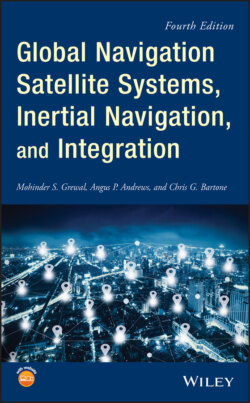Читать книгу Global Navigation Satellite Systems, Inertial Navigation, and Integration - Mohinder S. Grewal - Страница 82
3.3.1.2 Coriolis Vibratory Gyroscopes (CVGs) Tuning Fork Gyroscopes
ОглавлениеThe tuning fork is the paradigmatic Coriolis vibratory gyroscope, long used as voice‐band frequency source before being pressed into service as a gyroscope, and it has since inspired miniaturized MESG designs using the same general principles. These mechanical principles are illustrated in Figure 3.3, showing how the normally counterbalanced synchronized motions of the two tines are coupled through the Coriolis effect due to rotations about the handle into an unbalanced vibratory torsion mode that is output through the handle. Counterbalanced momentum of the tines is an essential design feature for Coriolis vibratory gyroscopes (CVGs), here using two masses traveling in opposite directions to mitigate the effects of Newton's third law. Vibrations tend to launch elastic waves into the surrounding materials, so control of the distribution of vibration is a critical design issue for all CVGs – keeping it where it belongs and eliminating it where it does not belong. Operation requires methods for controlling the tuning fork motion and sensors for detecting the output mode. Tuning fork gyroscopes fabricated from quartz can perform both functions using the piezoelectric properties of quartz. Tuning forks fabricated in silicon are discussed in the following text.
Figure 3.3 Tuning fork gyroscope.
